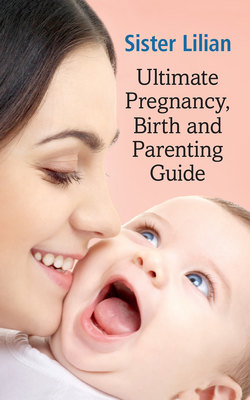Читать книгу Ultimate, Pregnancy, Birth and Parenting Guide - Lilian Paramor - Страница 21
На сайте Литреса книга снята с продажи.
CIRCULATION SYSTEM NIGGLES
ОглавлениеThe network of blood vessels in your body is far more extensive during pregnancy to support your growing baby. In addition, your blood volume increases by between 40% and 50%. Increased progesterone levels also relax the smooth muscle layer of the blood vessel walls, and more effort is needed for blood to circulate in your body. This increased burden on the heart and the body as a whole has wide-ranging effects, mostly not serious although warning signs should be heeded.
There are three main pregnancy conditions related to the circulatory system:
1.Swelling
More about it:
•Moderate water retention is quite common in areas like the hands and feet due to the extra blood volume of pregnancy.
•As pregnancy progresses, many women are less mobile, making circulation less efficient and swelling more likely.
•The extra pressure in your abdominal area exerted by the growing uterus and baby may keep blood from flowing efficiently to and from your legs, and this can lead to swelling of your feet and ankles.
•A more unusual form of swelling may affect the fluid in your eyes, leading to visual disturbances – you may have to stop wearing contact lenses or you may need a new lens prescription for your spectacles.
Self-help tips:
✓Walk briskly for five minutes each hour, especially if you have a standing or sedentary job.
✓In addition, go for a daily walk of at least 20 minutes.
✓Do ankle and calf exercises while sitting to stimulate circulation – simply roll your ankles and pull your toes up towards your knees and then point them.
✓Do not cross your legs at the ankles or knees while sitting as this adds to blood pooling in your legs.
✓Do not limit your fluid intake, thinking this will prevent swelling – it is important for your circulation system that you drink about 1,5–2 litres of water a day.
✓Take the tissue salts Nat mur and Nat sulph to help balance fluid levels in your body.
✓Rest sufficiently with your feet up.
✓Plunge your feet into a tub of cold water to relieve swelling and pain.
See your midwife or doctor:
If swelling is present in the morning and does not quickly improve, and if it is accompanied by nausea, headache or visual disturbances.
2.Varicose veins
More about it:
•A varicose vein is a large, swollen, sometimes twisted vein that is close to the surface of the skin. They are quite common in pregnancy, especially in the calves, but you can also get them on your labia (vaginal lips) and in the groin area. Piles (haemorrhoids) are a form of varicose vein.
•Varicose veins are generally very uncomfortable with aching in the affected area.
•The extra pressure on an expectant mom’s circulatory system makes her more prone to varicose veins. The tendency to develop them also runs in families.
•Although varicose veins are not always serious, it is essential that the self-help tips and warnings are taken to heart to prevent complications.
Self-help tips:
✓Important Exercise regularly to improve circulation and muscle tone.
✓Rest often between periods of activity.
✓Put your feet up and do not cross your legs at the ankles or knees.
✓Varicose vein stockings support circulation and soothe pain, but may be uncomfortable in hot weather.
✓Occasionally lie with your buttocks up on a pillow or two to relieve pressure of varicose veins in the groin or labia; it will also help to wear a firm pressure pad inside your panties.
✓An ice pack wrapped in a flannel and placed on any bulging, painful area may give some relief.
✓Taken regularly, the tissue salts Calc fluor and Ferrum phos help to improve elasticity and strength of the blood vessel walls and may help prevent and treat varicose veins.
✓Do this exercise two or three times a day to provide relief from varicose veins and aching legs:
Lie flat on the floor with your buttocks up against the wall and your legs extended up the wall.
Keeping your feet against the wall, draw your knees down towards your chest. Gradually return your legs to the starting position. Repeat 10 times.
Gradually open your legs against the wall until you feel a stretch in the inner thigh muscles, then bring them together again. Repeat 10 times.
See your midwife or doctor:
If you have a persistent burning ache in your legs, the area where the varicose veins are looks bruised, you feel unwell or you breathe with difficulty, see your doctor so that the possibility of blood clots can be investigated.
3.Haemorrhoids (piles)
More about it:
•These are varicose veins of the anus and rectum, and they may protrude externally or remain inside the rectum.
•Suspect piles if fresh blood is passed with a bowel movement or tags of skin or grape-like clusters protrude from your anus.
•Piles also burn, itch and are very uncomfortable, and they usually become worse during pregnancy and labour if not treated.
Self-help tips:
✓Prevention is the best strategy: exercise regularly to tone all body tissues, avoid constipation, drink plenty of water and take care not to pick up excessive weight by eating healthily.
✓Apply a homeopathic or pharmacy-advised haemorrhoid cream to help shrink piles.
✓Take the tissue salts Calc fluor and Ferrum phos to strengthen blood vessel walls.
See your midwife or doctor:
If you have any piles as they may rupture during birth if not treated. On rare occasions surgery may be necessary.
